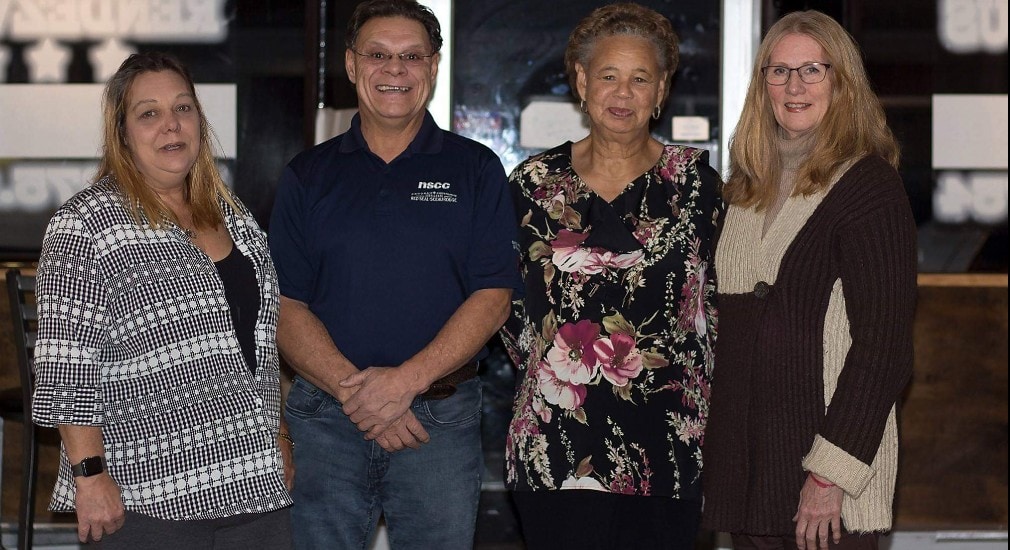
KJIPUKTUK (Halifax) – The mostly Black residents of the Town of Shelburne’s South End community continue to worry about water and they continue to worry about their health.
As we first reported in early 2017, for 75 years the nearby Shelburne Town Dump received industrial, medical and residential waste not just from the town, but also from Lockeport and all of eastern Shelburne County.
After the dump’s closure in the nineties it continued to be used as a transfer station for things like fridges, stoves, and empty oil barrels. Enforcement was lax.
Within the community, which is downhill from the dump, airborne pollution and leachate have become a source of concerns.
“We all have the same feelings and fears about what we were exposed to when we grew up, the many deaths from cancer we experience, the exceptionally high number of men that passed away before they turned seventy,” Louise Delisle told the Nova Scotia Advocate at the time.
Delisle is one of the residents who joined the South End Environmental Injustice Society (SEED) to give the small community a voice and raise the profile of its concerns.
Since the story broke the group endured a racist verbal attack on Facebook by a town councillor, and won the 2018 group award at the Nova Scotia Human Rights Awards Celebration.
Most importantly, SEED is still going strong and fighting hard to get at the truth and make their community a better place. In its effort it has found some allies. The Town of Shelburne however has not yet offered any tangible support, Delisle says.
Through the efforts of Rural Water Watch, a NGO that helps communities in rural Nova Scotia test for water quality issues, some 60 wells in the community have been thoroughly tested. More testing continues. Funding for this comes mainly from the Nova Scotia Community College(NSCC) , with some additional support from the Nova Scotia department of Environment.
Although leaching from the dump at this time was found not to be a factor, coliform bacteria and e. coli were found in most wells. And that’s a problem.
“People may well be getting sick from their water without realizing it,” says Delisle. “It’s not something you can see, and your water may smell good, and still be polluted. People are very worried and upset.”
At this time the source(s) of the pollution are unknown, Delisle explains. It could be deer or other animals, it could come from the town sewer system itself, it could be so many things.
The problem is aggravated because during the summer many of the wells run dry, especially with the increasingly intense droughts that southern Nova Scotia has experienced over the last years.
“We did a presentation to the Town, to give them the results of the water testing and talk to them about establishing an artesian well somewhere in the community. Right now people are getting water from a garden hose at the fire department when their well goes dry, and that is no good,” says Delisle.
The Town so far has been noncommittal. Most of the town’s residents beyond the South End have access to town water, but South End residents have been told that geological conditions in their part of town makes such access too expensive.
Wells were typically tested twice, at different labs, says Nova Scotia Community College instructor Dr. Wilber Menendez-Sanchez, who is a member of Rural Water Watch (RWW).
We trained two paid community members on how to collect the samples, how to take them to the lab, and how to disinfect wells, That will allow at least some community members to be available for other homes, Menendez-Sanchez says.
When we talked to residents and the Town we were told the cost of hookups to the town water supply is very high, he says.
We are currently looking for alternatively solutions with the help of Applied Research and the Environmental Engineering program at the Nova Scotia Community Project. This is also done in collaboration with NSCC Shelburne Campus, and we continue to talk with the Town. We are beginning to join forces, slowly but moving,” Menendez-Sanchez tells the Nova Scotia Advocate.
“We did not find contaminants coming from a landfill, but that doesn’t mean it wasn’t there say three months ago or that it would not be there maybe next month,” Menendez-Sanchez says.
Does the absence of landfill leaching at this time mean the earlier talk of environmental racism was inappropriate?
Delisle doesn’t buy it.
“It’s highly likely that the dump leached contaminants at some time. And the dump is still there, it will leach again. And it came at us through the air as well. It’s still affecting the Black community, and it’s still environmental racism,” says Delisle.
“It’s the same with the current problems. Why don’t we have access to clean water? To me that is discriminating,” Delisle says.
“So far there is no help for the many older women in the community trying to deal with getting their wells cleaned, and not receiving any financial support to repair their wells and deal with the contamination. They’re getting older and it is getting harder and harder.”
“I don’t know how much more blatant it can get. It’s who we are and where we live.”
With a special thanks to our generous donors who make publication of the Nova Scotia Advocate possible.
Subscribe to the Nova Scotia Advocate weekly digest and never miss an article again. It’s free!




Seems to be a Very Common Problem with not only Shelburne, but Wells in General.
Nor do I think it’s Safe to Put Chlorine Bleach in them, as they are commonly doing, – even to pass a Water Test when Houses are being Sold!
Lockeport as well, has a Reservoir which is supplying Contaminated Water, to certain parts of Lockeport, such as Clearwater, etc.